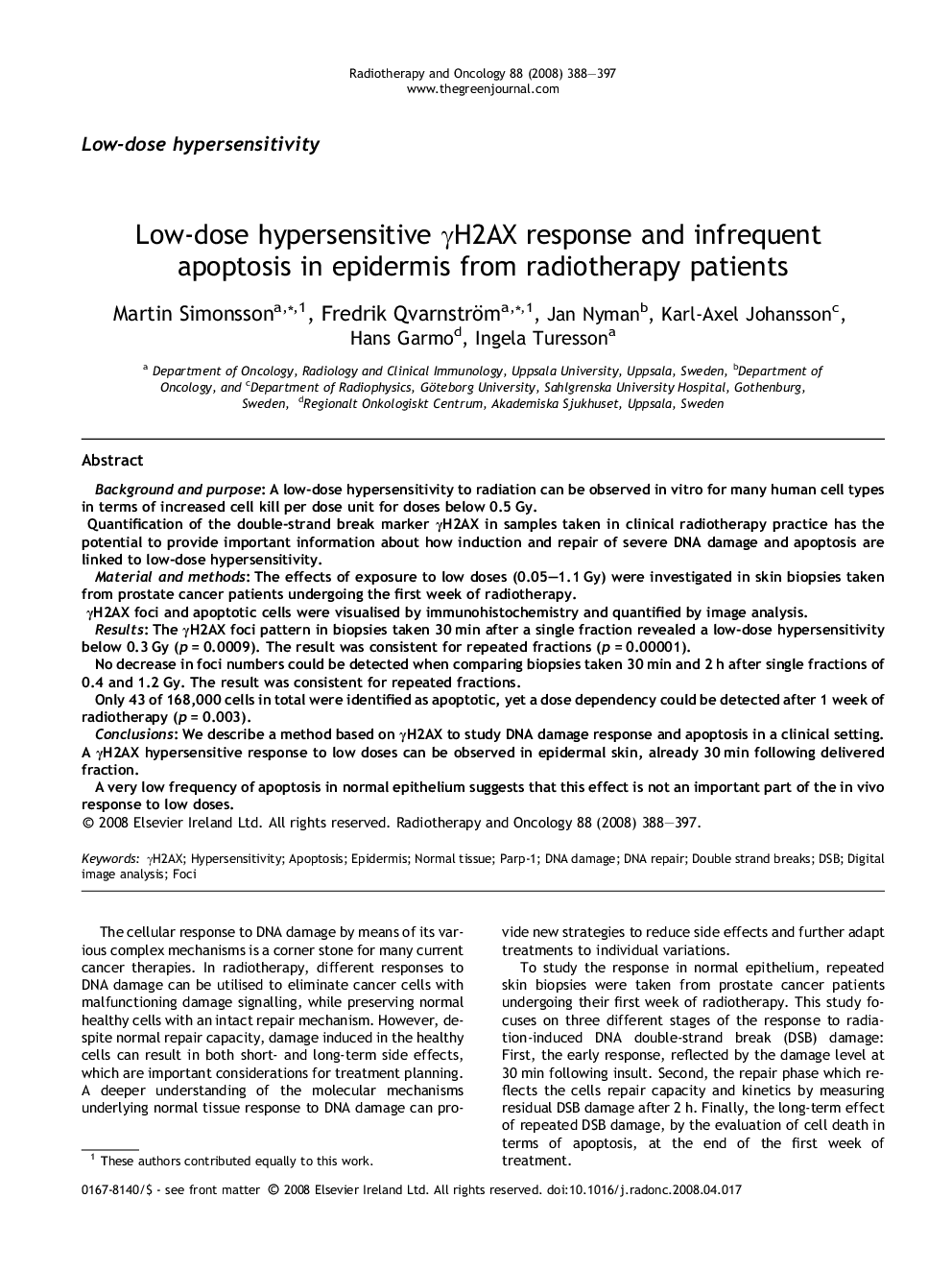| Article ID | Journal | Published Year | Pages | File Type |
|---|---|---|---|---|
| 2160465 | Radiotherapy and Oncology | 2008 | 10 Pages |
Background and purposeA low-dose hypersensitivity to radiation can be observed in vitro for many human cell types in terms of increased cell kill per dose unit for doses below 0.5 Gy. Quantification of the double-strand break marker γH2AX in samples taken in clinical radiotherapy practice has the potential to provide important information about how induction and repair of severe DNA damage and apoptosis are linked to low-dose hypersensitivity.Material and methodsThe effects of exposure to low doses (0.05–1.1 Gy) were investigated in skin biopsies taken from prostate cancer patients undergoing the first week of radiotherapy. γH2AX foci and apoptotic cells were visualised by immunohistochemistry and quantified by image analysis.ResultsThe γH2AX foci pattern in biopsies taken 30 min after a single fraction revealed a low-dose hypersensitivity below 0.3 Gy (p = 0.0009). The result was consistent for repeated fractions (p = 0.00001).No decrease in foci numbers could be detected when comparing biopsies taken 30 min and 2 h after single fractions of 0.4 and 1.2 Gy. The result was consistent for repeated fractions.Only 43 of 168,000 cells in total were identified as apoptotic, yet a dose dependency could be detected after 1 week of radiotherapy (p = 0.003).ConclusionsWe describe a method based on γH2AX to study DNA damage response and apoptosis in a clinical setting. A γH2AX hypersensitive response to low doses can be observed in epidermal skin, already 30 min following delivered fraction.A very low frequency of apoptosis in normal epithelium suggests that this effect is not an important part of the in vivo response to low doses.
